Growing vegetables at home doesn’t need a big yard or fancy tools. You can grow fresh, healthy veggies right on your patio, balcony, or even a small corner of your backyard. All you need are some pots, good soil, and a bit of sunshine. Growing in pots is easy, saves space, and lets you control what your plants need. Plus, it’s a fun way to enjoy fresh food while saving money. Ready to start? Let’s dive into the basics and tips to help you maximize your harvest!
Choosing the Right Pots
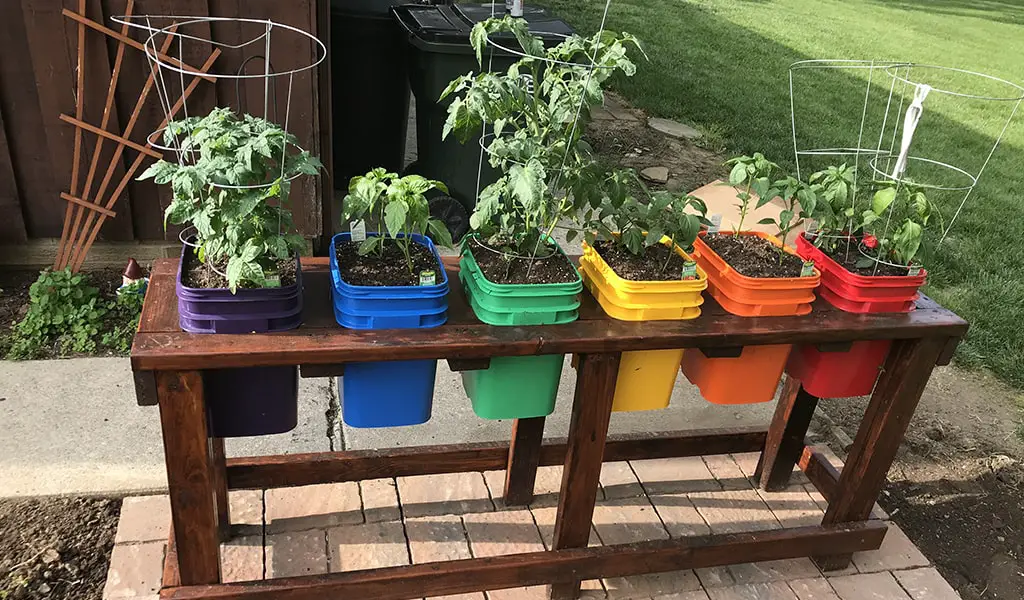
Importance of Pot Size for Different Vegetables
The size of your pot is crucial for giving your plants enough room to grow. Different vegetables have different root systems, so they need pots that match their needs. For example:
Small pots (1-2 gallons): Perfect for herbs like basil, thyme, and chives.
Medium pots (3-5 gallons): Great for compact vegetables like lettuce, spinach, or bush beans.
Large pots (10+ gallons): Necessary for deep-rooted plants like tomatoes, peppers, and zucchini.
If your pot is too small, your plants may become root-bound, which can stunt their growth and reduce your harvest.
Material Options
Pots come in all kinds of materials, and each has its pros and cons:
Plastic pots: Lightweight, affordable, and retain moisture well. They’re great for hot climates but can overheat in direct sun.
Clay or terracotta pots: Attractive and breathable, but they dry out quickly and are heavy to move.
Fabric pots (grow bags): Lightweight, eco-friendly, and provide excellent drainage. They’re perfect for vegetables that need good airflow to their roots.
Upcycled containers: Buckets, crates, or even old cans can work as long as they’re clean, safe, and have proper drainage.
Choose what fits your budget, style, and gardening needs.
Proper Drainage and Why It Matters
No matter what pot you pick, drainage is essential. Without it, water can collect at the bottom of the pot, drowning the roots and causing rot. Here’s how to ensure good drainage:
Look for pots with several holes at the bottom. If there aren’t any, drill a few yourself.
Place small rocks, pebbles, or broken clay pieces at the bottom of the pot to prevent soil from clogging the holes.
Use a saucer to catch excess water indoors, but empty it after watering to avoid soggy roots.
Picking the Best Vegetables for Pots
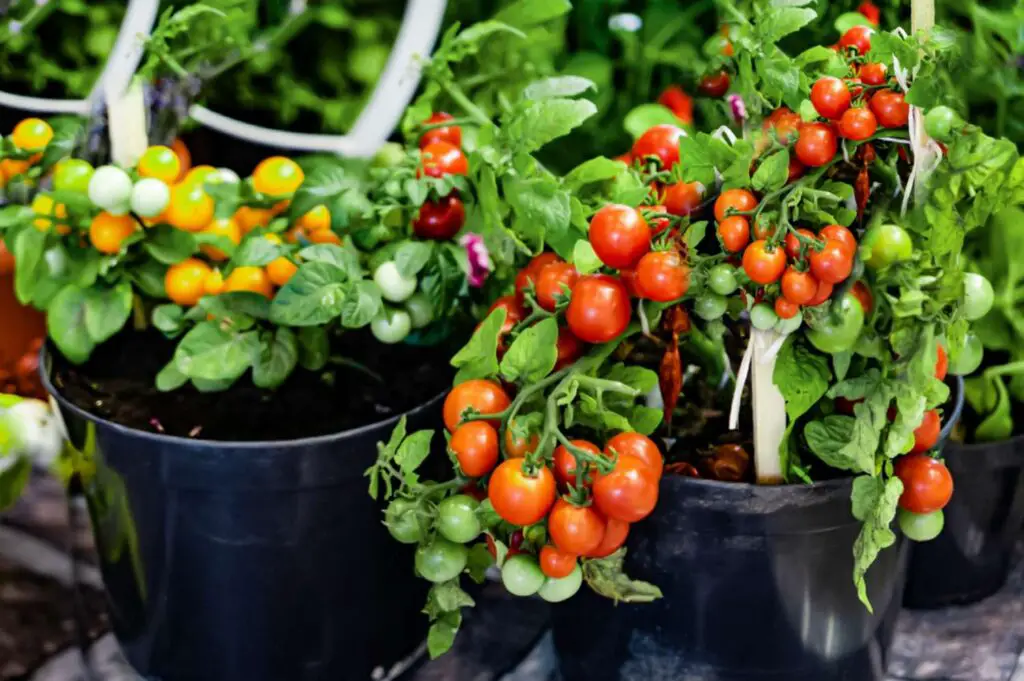
Beginner-Friendly Vegetables for Pots
If you’re just starting, go for vegetables that are easy to grow and maintain. These plants do well in pots and provide rewarding results:
Tomatoes: Cherry or patio varieties are perfect for containers. They grow quickly and produce lots of fruit.
Peppers: Bell peppers and chilies thrive in pots as long as they get enough sun.
Lettuce and greens: Leafy greens like spinach, kale, and arugula grow fast and don’t need deep pots.
Herbs: Basil, parsley, cilantro, and mint are great options and add flavor to your meals.
Tips for Selecting Compact or Dwarf Varieties
Compact or dwarf varieties are ideal for pots because they don’t need as much space as full-sized plants. Look for seeds or starter plants labeled as “container-friendly” or “dwarf.” Examples include:
Bush beans instead of pole beans.
Dwarf zucchini varieties that take up less space but still produce plenty.
Miniature cucumbers that climb a small trellis or stay compact in a pot. These plants are bred to grow smaller but still give you a satisfying harvest.
Seasonal Considerations for Success
The best vegetables for your pots will depend on the season and your local climate. Keep these tips in mind:
Spring and fall: Grow cool-weather crops like lettuce, spinach, and peas.
Summer: Focus on warm-weather vegetables like tomatoes, peppers, cucumbers, and beans.
Year-round: Herbs like parsley and mint can grow indoors or outdoors throughout the year.
Check your growing zone and plant vegetables during their ideal seasons for the best results.
Setting Up for Success
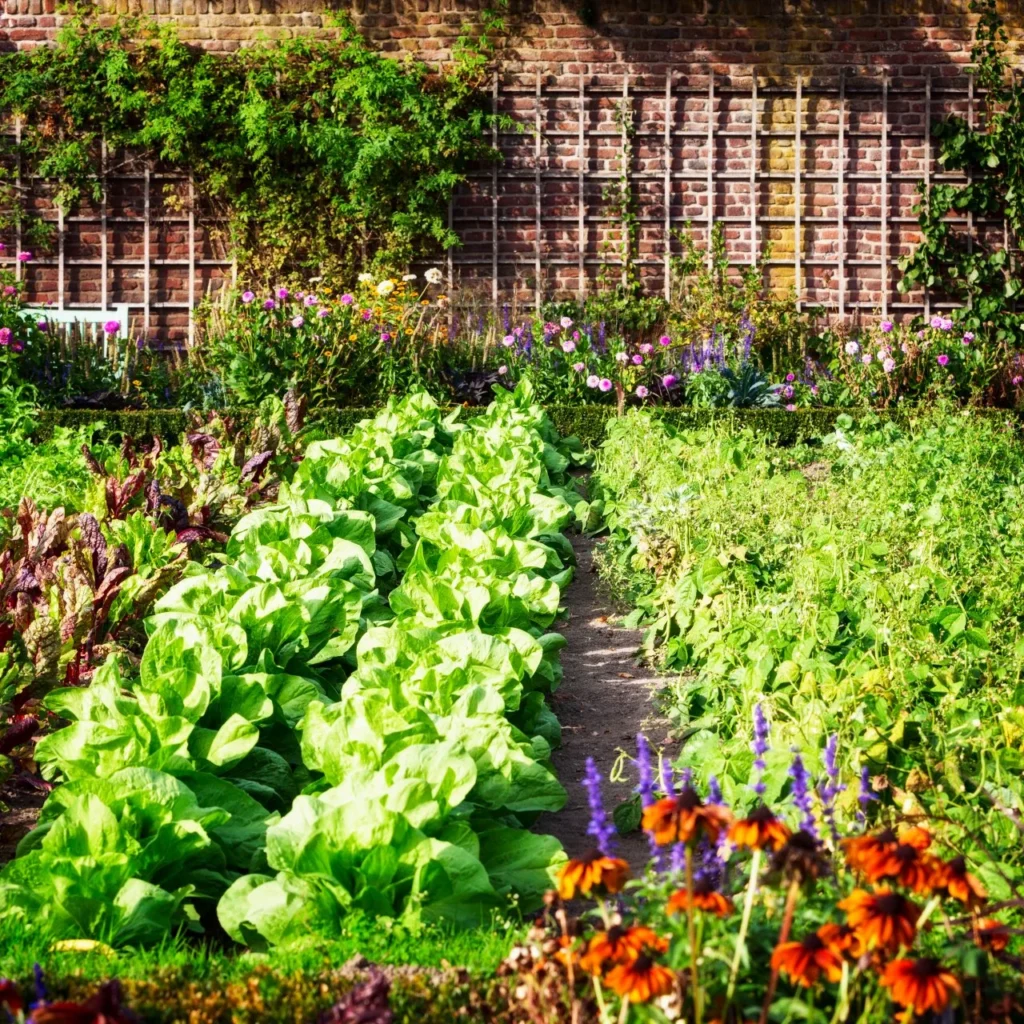
Importance of Good Soil for Potted Plants
Soil is the foundation of your container garden. Regular garden soil won’t work because it’s too heavy and can hold too much water. Instead, use:
Lightweight potting mix: Specially designed for containers, it allows for better drainage and root growth.
Soil with added nutrients: Look for mixes that include compost, perlite, or vermiculite for healthy plants.
DIY mix: Combine equal parts potting soil, compost, and coarse sand or perlite to create your own blend.
Adding Compost or Organic Fertilizer
Vegetables in pots can quickly use up nutrients in the soil, so it’s important to replenish them. To keep your plants growing strong:
Mix compost into the soil before planting to boost nutrients.
Use slow-release organic fertilizer to feed plants gradually over time.
Liquid fertilizer can be applied every 2-4 weeks to give your plants a quick nutrient boost.
Feeding your plants regularly helps them produce more vegetables and stay healthy.
Placement: Finding the Right Spot with Enough Sunlight
Sunlight is one of the most important factors for growing vegetables. Most need at least 6-8 hours of sunlight a day. To set up the best spot:
Choose a sunny location like a balcony, patio, or near a window if growing indoors.
Use a movable setup: Place pots on rolling trays or plant stands with wheels so you can chase the sun.
Shade some plants if needed: While most vegetables love full sun, leafy greens like lettuce can benefit from partial shade during hot afternoons.
Watering and Maintenance Tips
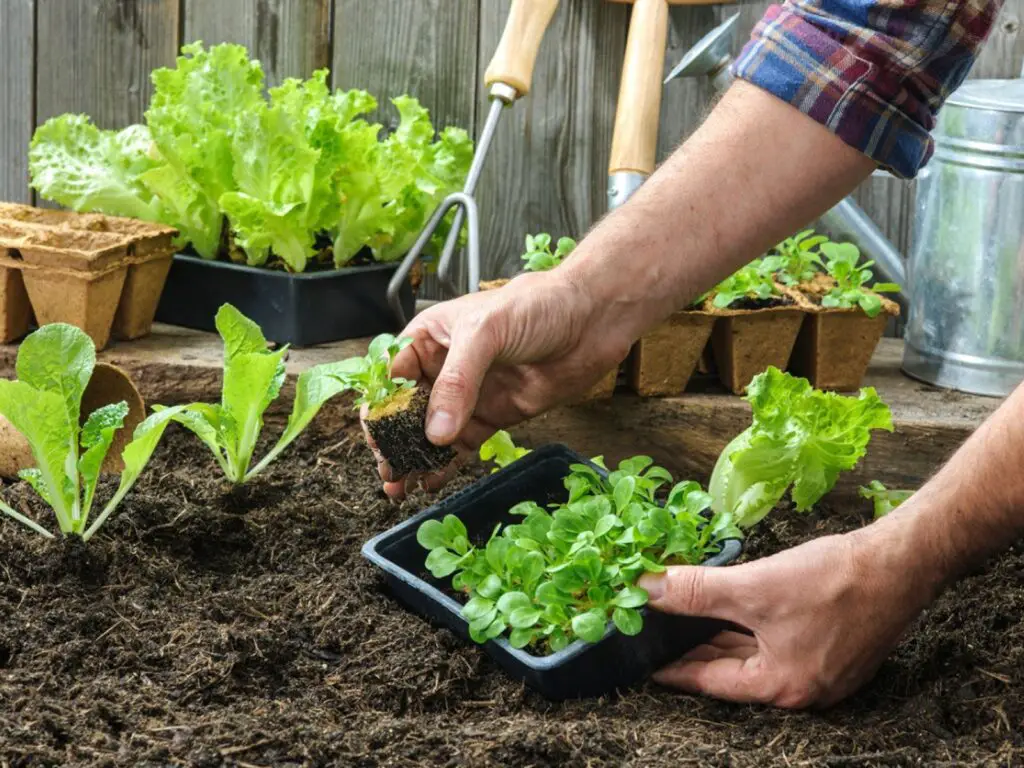
Proper watering and regular maintenance are the keys to keeping your container garden thriving. Plants in pots need a bit more care since they dry out faster and depend entirely on you for nutrients. Here’s how to keep your vegetables healthy:
How to Water Correctly
Watering is a balancing act—too much or too little can harm your plants. Follow these tips:
Check the soil: Stick your finger an inch into the soil. If it feels dry, it’s time to water.
Water deeply: Ensure water reaches the roots by watering until you see it drain from the bottom.
Avoid overwatering: Let the top layer of soil dry out slightly before watering again to prevent root rot.
Using Mulch to Retain Moisture
Mulching helps keep the soil moist and reduces how often you need to water. Try these options:
Organic mulch: Use shredded bark, straw, or grass clippings to cover the soil’s surface.
Inorganic mulch: Pebbles or small stones can also work and add a decorative touch.
Mulch for temperature control: It keeps roots cool in the summer and warm in the cooler months.
Regular Pruning and Checking for Pests
Keeping an eye on your plants and trimming them regularly can prevent problems and boost growth. Here’s what to do:
Prune dead or yellow leaves to encourage healthy growth.
Pinch off flowers early in the season to focus energy on root and leaf development.
Inspect for pests: Look under leaves and along stems for aphids, spider mites, or other insects. Remove them manually or use organic pest control methods like neem oil.
Related Topic: How To Grow Vegetables Indoors Without Sunlight
Maximizing Your Harvest
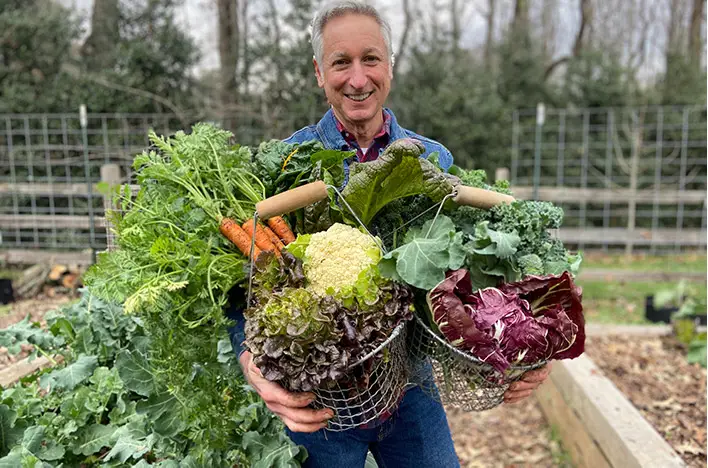
Once your vegetables start growing, there are a few tricks to ensure you get the most out of your container garden. With the right care and timing, you can enjoy a bigger and longer-lasting harvest. Here’s how to make the most of your efforts:
Feeding Your Plants for Better Yields
Vegetables in pots rely on you for all their nutrients, so feeding them regularly is crucial for a high yield. Try these methods:
Use balanced fertilizers: Look for fertilizers labeled with equal amounts of nitrogen, phosphorus, and potassium (NPK 10-10-10).
Add compost tea: A natural liquid fertilizer made by steeping compost in water, it boosts plant health and production.
Apply nutrients at the right time: Feed plants every 2-4 weeks during their growing season, especially when they start flowering or fruiting.
Harvesting at the Right Time to Encourage New Growth
Knowing when and how to pick your vegetables can help the plant produce more. Follow these tips:
Pick regularly: Harvest vegetables like beans, peppers, and cucumbers frequently to encourage continuous production.
Don’t wait too long: Overripe vegetables can take energy away from the plant and reduce future yields.
Cut, don’t yank: Use scissors or garden shears to avoid damaging the plant when harvesting.
Rotating Crops for Continuous Production
Rotating what you grow in your pots can improve soil health and keep pests and diseases at bay. Here’s how to do it:
Switch plant types: Grow leafy greens after fruiting vegetables like tomatoes or peppers.
Refresh soil: Replace or rejuvenate the soil between planting cycles with compost or new potting mix.
Plan for successive planting: When one crop finishes, replace it with another that suits the season, like spinach after summer cucumbers.
Creative Ideas for Small Spaces
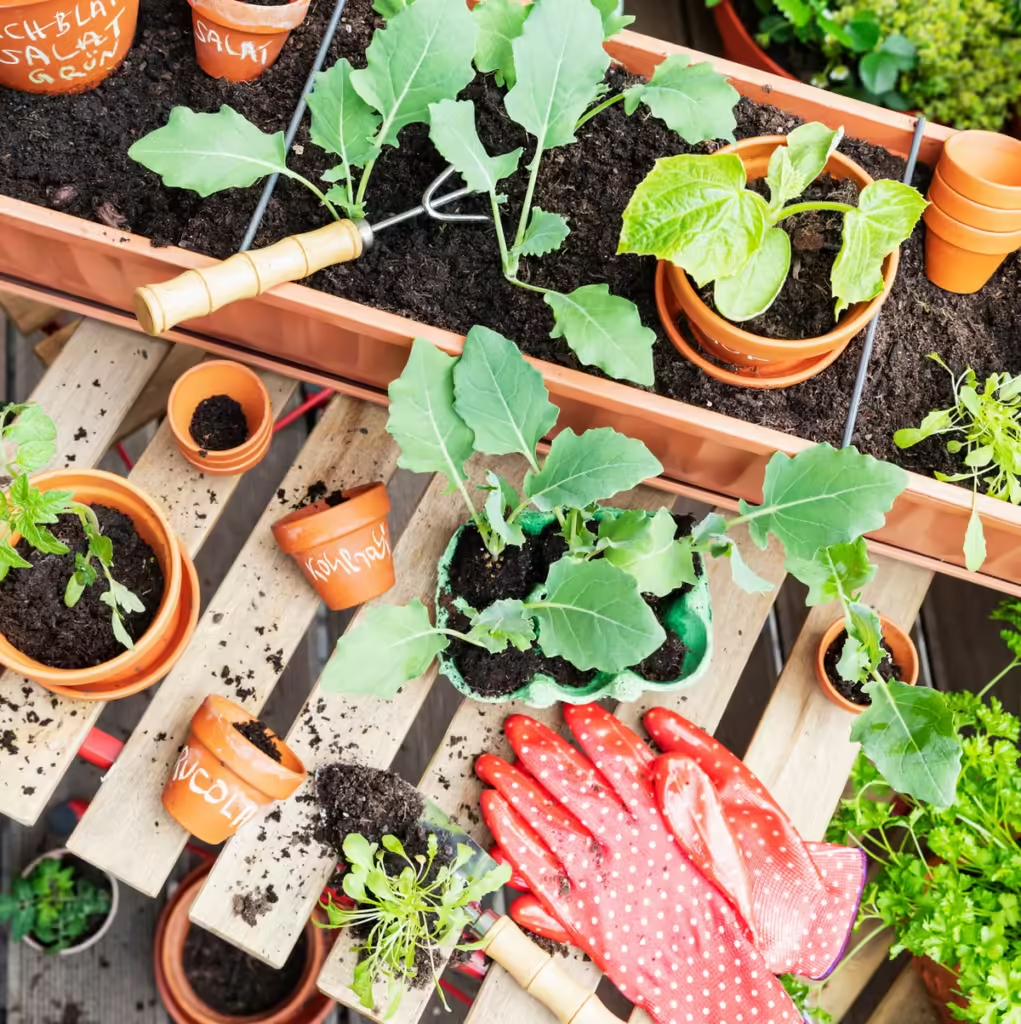
If you’re working with limited space, don’t worry! There are plenty of creative ways to make the most of your area and grow a thriving vegetable garden in pots. From vertical gardening to upcycled containers, you can turn any small space into a productive garden. Here are some ideas to get you started:
Vertical Gardening
When space is tight, think vertical! Growing upwards saves room and can give your plants more sunlight. Try these options:
Stacked pots: Stack pots on top of each other, creating a tower effect. This is perfect for growing herbs or smaller vegetables like strawberries.
Trellises for climbing plants: Use a trellis or vertical frame to grow plants like tomatoes, cucumbers, or beans. The vines will climb up, and you’ll save space on the ground.
Wall-mounted planters: Hang pots or use wall-mounted shelves to grow herbs and greens. You can place these near windows or on balcony rails.
Hanging Baskets for Herbs and Smaller Plants
Hanging baskets are a great way to make use of unused space above your head. They’re perfect for plants that don’t need a lot of space to grow. Consider these ideas:
Herb baskets: Grow herbs like basil, mint, or parsley in hanging baskets. These plants do well in pots and can be easily accessed from kitchen windows or porches.
Tomatoes and strawberries: Try growing smaller tomato varieties or strawberries in hanging planters. They’re easy to maintain and save ground space.
Decorative appeal: Hanging baskets also add charm and color to your outdoor space while keeping plants off the ground.
Repurposing Items as Containers
Upcycling everyday items into plant containers is a budget-friendly and creative way to grow vegetables. Look around your house or garage for items that can serve as pots:
Buckets and barrels: Old buckets, barrels, or plastic containers can be turned into large planters for vegetables like potatoes, peppers, or carrots.
Crates and wooden boxes: Use wooden crates or boxes for a rustic look. Just make sure to line the bottom with fabric or plastic to retain soil.
Old cans and jars: Small plants like herbs or lettuce can thrive in repurposed cans, jars, or even teacups. Make sure to add drainage holes.
Conclusion
Growing vegetables in pots is a fun and rewarding way to enjoy fresh, homegrown produce, no matter how much space you have. By choosing the right pots, picking the best vegetables, and setting up your containers properly, you can create a thriving garden at home.
Regular care like watering, feeding, and harvesting at the right time will help you get the most from your plants. Plus, with creative ideas for small spaces, you can turn even a small balcony or windowsill into a productive garden. So, grab your pots, get planting, and enjoy the harvest! Happy gardening!
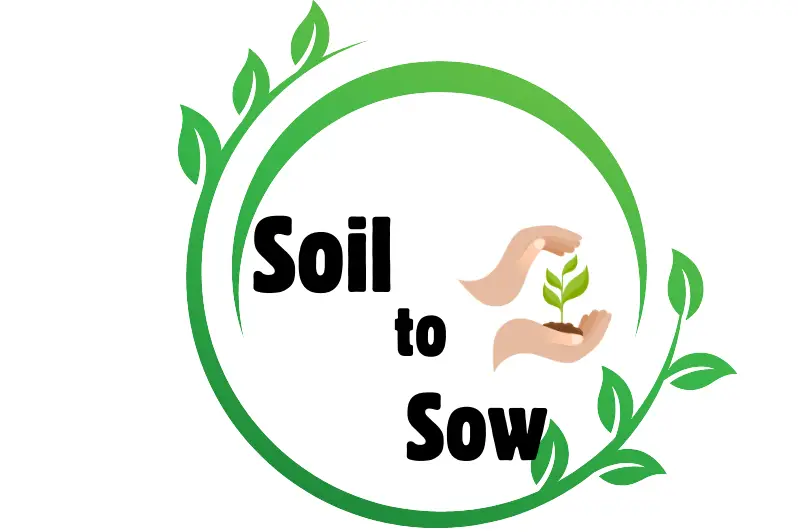

3 thoughts on “Growing Vegetables At Home in Pots To Maximize Your Harvest”